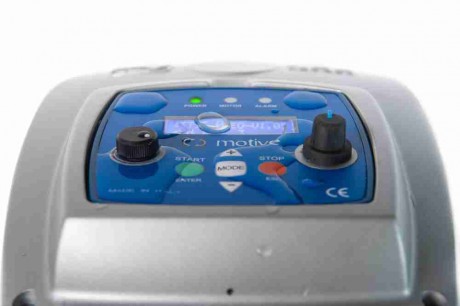 Adjusting the flow and pressure of a pump, a hydraulic power unit, a hydraulic actuator, a compressor, a ventilator is generally done through valves. But why not just use an inverter? In certain applications, this is a good choice.
Adjusting the flow and pressure of a pump, a hydraulic power unit, a hydraulic actuator, a compressor, a ventilator is generally done through valves. But why not just use an inverter? In certain applications, this is a good choice.
Adjusting the flow/pressure/force of a pump, a hydraulic power unit, an oil-hydraulic actuator, a compressor, an extraction fan, a ventilator, etc is normally done through shutters or valves. If we have a choke device of this kind, it means we have chosen not to use a variable speed drive (inverter). In this case, the disadvantages are numerous: inability to program ramping up or stopping; nor to synchronize multiple devices; fewer opportunities for interaction with other machines and controls (such as a pressure transducer), less access to controls, more noise, greater peak currents; shorter life of the motor and of the mechanical parts of the system; and above all the absence of energy savings. It is like controlling the speed of a car just by using the brake.

An inverter also simplifies the installation because a system with direct or star-delta type starting often involves the use of suitably oversized power contactors to counter the high electric arcing caused by the overcurrent normally associated with these starting systems. In addition, protection systems for the motor via circuit breakers should always be provided. So: shutter/valve + cabinet + knife switch + motor control relay + motor overload protection automatic switch could be saved with a variable speed drive. Let’s add that in certain applications, just the cost of the choke (think for example of the proportional valve of a hydraulic power unit) exceeds that of an inverter.
So why not just use inverters? Essentially for the ease of assembly (assumed) with respect to
an electronic device to be wired up and programmed, the reduced size, the degree of protection from dust and liquids and the ease of use, the difficulty of integrating in the system the inverter with its cabinet, the accessibility of the controls. Sometimes also the cost of the inverter can be considerable, especially when it is added to that of a cabinet and cables.

Only the advantages of the inverter
With Neo-WiFi these reasons are no longer valid. There remain only the advantages of the inverter. In fact:
- Neo-WiFi is a motor-inverter and as such cancels the need for cables and cabinets, the study, the installation, the wiring, and the testing of the motor+inverter system, as well as the risks associated with possible errors.
- Not requiring cables and cabinets, and being an integral part of the motor, it does not take up space.
- Programming is easier than using the TV remote control.
- The keypad of the Neo-WiFi is removable, can operate remotely over wireless and can be placed up to 20 meters away. No wiring, no cables. It does not need wiring because it is supplied by induction when placed in its housing on the motor or in the “Block” device, or fed by rechargeable lithium batteries. Imagine for instance the advantage of installing a ceiling fan with this drive and controlling it from wherever you want without any installation cost.
- Even a child knows how to use a device with a red button, a green one, a left-zero-right switch and a control knob.
Neo-WiFi is IP65. Its keypad is IP67.
For further information: www.motive.it



